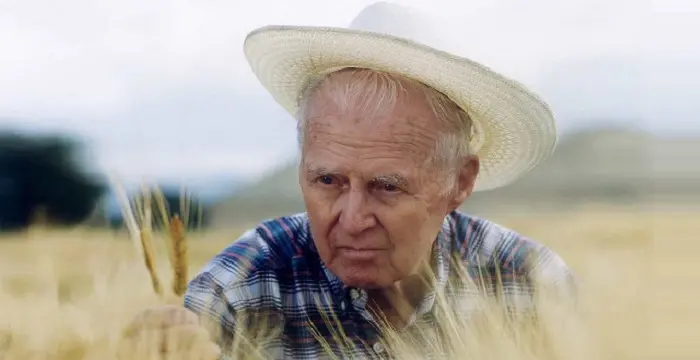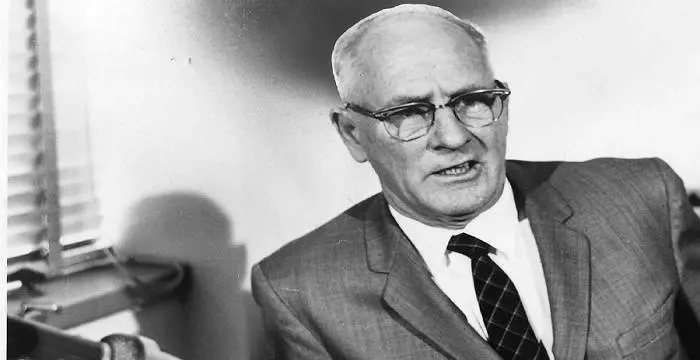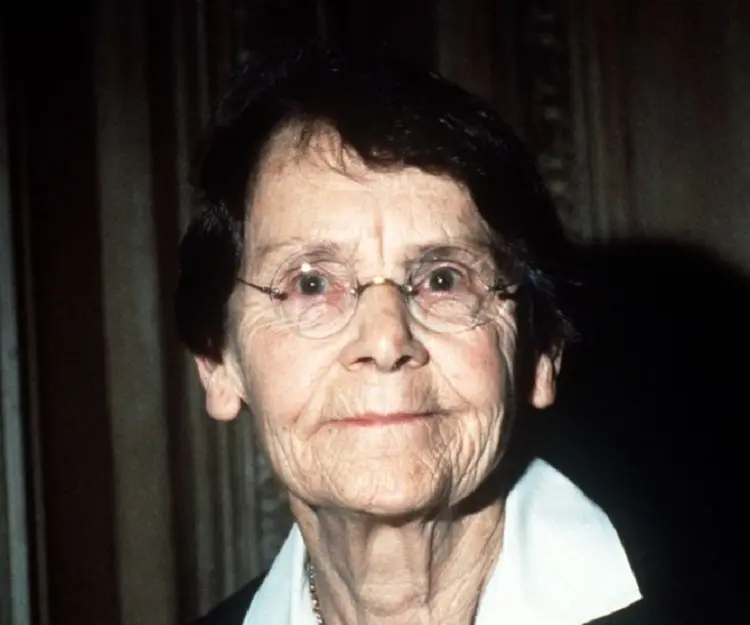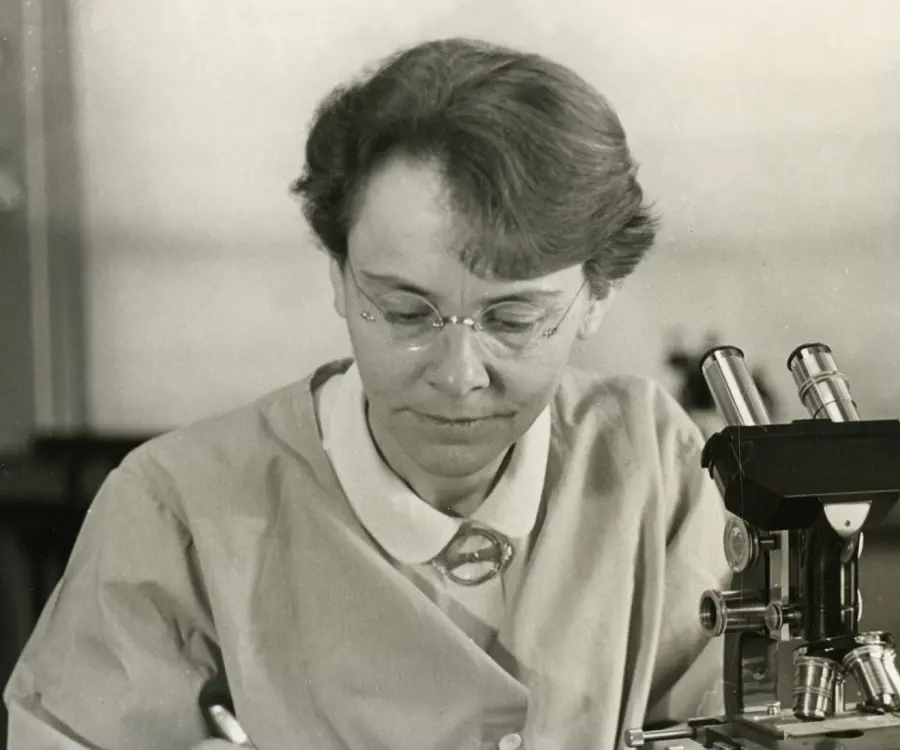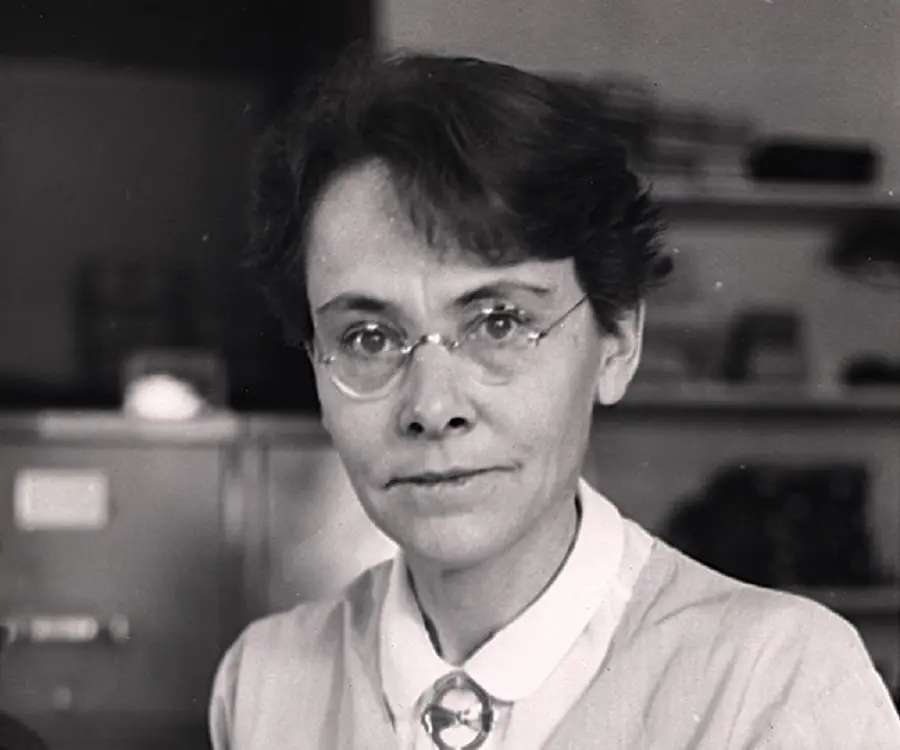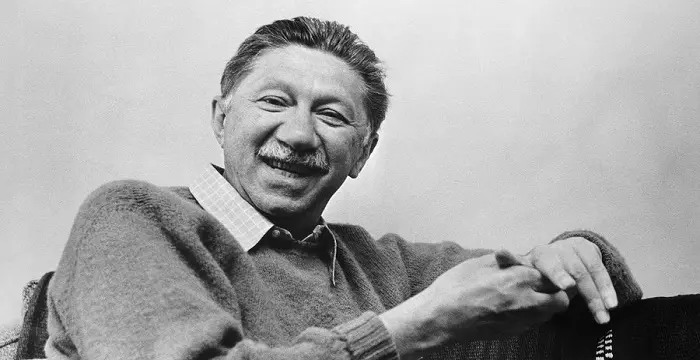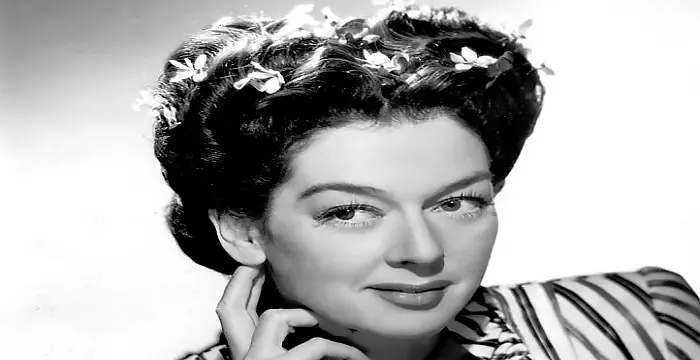
Barbara McClintock - Geneticists, Family and Personal Life
Barbara McClintock's Personal Details
Barbara McClintock was a renowned American scientist who was awarded the Nobel Prize for her pioneering research on genetic transposition
| Information | Detail |
|---|---|
| Birthday | June 16, 1902 |
| Died on | September 2, 1992 |
| Nationality | American |
| Famous | Cornell University, Scientists, Geneticists |
| City/State | Connecticut |
| Known as | Barbara. McClintock |
| Universities |
|
| Notable Alumnis |
|
| Birth Place | Hartford |
| Gender | Female |
| Sun Sign | Gemini |
| Born in | Hartford |
| Famous as | Scientist |
| Died at Age | 90 |
// Famous Geneticists
Norman Borlaug
Norman Borlaug was an American biologist known as the “Father of the Green Revolution”. This biography of Norman Borlaug provides detailed information about his childhood, life, achievements, works & timeline.
George Wells Beadle
George Wells Beadle was an American geneticist who won the 1958 Nobel Prize in Medicine. Check out this biography to know about his childhood, life, achievements, works & timeline.
Gregor Mendel
Gregor Mendel was an Austrian scientist and monk credited with being the father of modern genetics for his pioneering work in the study of heredity. This biography provides detailed information about his childhood, life, achievements, & timeline.
Barbara McClintock's photo
Who is Barbara McClintock?
Barbara McClintock was a renowned American scientist who did pioneering work in the field of cytogenetics. Her theories on gene regulation and discovery of “jumping genes” were a major breakthrough for the scientific world. An inquisitive soul since her childhood days, she was also a highly independent personality and that was probably one of the reasons her name was changed to Barbara from Eleanor; the latter being considered a very feminine name by her parents. The young child had a strained relationship with her mother who insisted that Barbara shouldn’t be admitted to college but eventually at his father’s insistence she was admitted to college. It was during college that she realised her interest in genetics and embarked on a life long journey in the stream. Always engrossed in solving some or the other problem this eminent scientist made some path breaking advancements in her chosen field. Starting from devising a technique to observe the chromosome in maize to charting the first gene map, to making detailed analysis on the life cycle of the species Neurospora crassa, her achievements are innumerable. But her most significant contribution was her theory on genetic regulation which even earned her a Nobel Prize. The dedicated cytogeneticist devoted her entire life towards scientific advancement and died a solitary soul. Read on to know more about her contributions to the sphere of genetics
// Famous Cornell University
Abraham Maslow
Abraham Maslow was a humanistic psychologist best known for his theory of self-actualization. This biography of Abraham Maslow provides detailed information about his childhood, life, achievements, works & timeline.
Huey Lewis
Best known for his album ‘Sports’, Huey Lewis is the lead singer, musician and lyricist for the band ‘Huey Lewis and the News’. Check out this biography to get detailed information on his life.
Mae Jemison
Mae Carol Jemison is a famous American astronaut who became the first African American astronaut to travel to space. To know more about her childhood, career, profile and timeline read on
Childhood & Early Life
On June 16, 1902, Eleanor McClintock aka Barbara McClintock, was born to parents Thomas Henry and Sara Handy McClintock in the capital city of Connecticut.
Eleanor who was rechristened as Barbara spent most of her early childhood with her relatives in New York, as her father a practising physician toiled to establish his business. In 1908, she was enrolled at the ‘Erasmus Hall High School’ when the family shifted base to Brooklyn.
The inquisitive and independent kid realised her attraction towards science and pursued higher education at the ‘Cornell University’, after completing high school in 1919.
At the ‘College of Agriculture’, affiliated to the ‘Cornell University’ she made her first tryst with genetics. Encouraged by eminent botanist Claude B. Hutchinson she took up the subject as a discipline, after earning a bachelor’s degree in Botany in 1923.
Two years later she completed her post-graduation and was awarded an MA in Botany. For her doctoral dissertation she involved in research work involving the structure and functionality of chromosomes in maize. She worked on her thesis under the guidance of botanists Lowell Fitz Randolph and Lester W. Sharp and was awarded a Ph.D. in 1927.
Career
The budding scientist continued her study of chromosomal behaviour in maize during meiosis and devised a technique, using carmine staining, which allowed researchers to observe chromosomes under the microscopes.
In the years 1930-31, she made a major breakthrough by explaining the concept of chromosomal cross-over as observed in homologous chromosomes during meiosis. Along with botanist Harriet Creighton she established scientific proof of the hypothesis that chromosomal cross over was responsible recombination of genetic traits.
The duo published a paper titled ‘A Correlation of Cytological and Genetical Crossing-over in Zea mays’ explaining their works.
Also in 1931, she created the first ever genetic map for maize representing the arrangement of three genes on maize chromosome 9. In further expansion of their work on chromosomal crossover, they demonstrated that the phenomenon occurs not only in homologous chromosomes but is also evident in sister chromatids.
She then worked in association with Lewis Stadler in Missouri during 1931-32 and used X-rays as mutagen for her studies on genetics. She studied the effects of radiation on chromosomal behaviour and explained the arrangement of DNA sequence on chromosome 6 of maize which is necessary for formation of a nucleolus.
Barbara then studied the non-homologous recombination of genetic material in 1933.She also surmised from her research work with chromosomes that telomeres are the structures that are responsible for maintaining stability of chromosomes during meiosis.
After obtaining a fellowship from the prestigious ‘Guggenheim Foundation’ she worked with Richard B. Goldschmidt in Germany. With growing political unrest in the European continent she had to cut short her six week training, during 1933-34.
From 1934-36, she continued her research work at ‘Cornell University’ which was funded by a grant from the ‘Rockefeller Foundation’.
In 1936, she joined the ‘University of Missouri’ as an Assistant Professor in Botany. Two years later she made a breakthrough, in the field of cytogenetics, when she charted the structure and functionality of the genetic loci of the chromosomes, namely centromeres.
Dissatisfied with the management at Missouri, in 1941, McClintock started looking for a job elsewhere. She was then appointed as a visiting faculty at ‘Columbia University’. Later in the same year she joined the ‘Carnegie Institution’ in Washington. She pursued her research in genetics at the ‘Cold Spring Harbor Laboratory’ at the institute.
This eminent cytogeneticist accepted an invitation to Stanford in 1944 where she made extensive karyotypic studies on the species Neurospora crassa and also its life cycle. The same year she became the third woman to be inducted into the ‘National Academy of Sciences’ and was also named the President of ‘Genetics Society of America’.
Back at the ‘Cold Spring Harbor Laboratory’ the same year, she continued her studies on maize and explained the impact of the ‘Dissociator’ (Ds) and ‘Activator’ (Ac) genetic loci, on the phenomenon of genetic mutation.
During the years 1948-50, she made startling revelations regarding the genetic behaviour and propounded the theory of gene regulation. The ‘Dissociator’ (Ds) and ‘Activator’ (Ac) units, which she discovered could exchange their positions on the chromosomes, were the “controlling elements” that influenced the behaviour of genes.
Her extensive research on Ac/Ds were presented in the paper ‘The origin and behavior of mutable loci in maize’ published by the National Academy of Sciences in their journal in 1950. She argued that it was the controlled regulation of the genes by the Ac/Ds units, which leads to formation of functionally and structurally different cells in multicellular organisms.
In 1951, she extended her studies to analyse the behaviour of Dc and As units on the phenotypic traits of four genes in maize and presented her inferences in a paper at the annual conference of the ‘Cold Spring Harbor Laboratory’.
Though her theories were not accepted widely among the scientific community, she remained unfazed by the criticism and continued her research and in 1953 published a paper on Genetics which delved into the theories she had developed, based on the analysis and investigation.
Though she pursued her research work on the Ac/Ds units she refrained from making her inferences public, owing to the reaction of her contemporaries towards her theories. A grant awarded by the National Academy of Sciences in 1957 provided the much needed boost to this scientist and she embarked on a new project which involved the study of progression of the chromosomal changes in maize.
Throughout the next two decades Barbara remained involved in the research work in Central America and during the extensive investigation she also delved into ethnobotany and paleobotany. The findings of the exhaustive research work were compiled together and published as ‘The Chromosomal Constitution of Races of Maize’.
In the 1960s, her discoveries of transposition and gene regulation received the due appreciation when other scientists also arrived at same conclusion through independent studies. With significant technological advancements made in the field of molecular biology it became possible to explain the molecular basis for transposition.
In 1967, she was named scientist emeritus at the ‘Carnegie Institute of Washington’ after her tenure as a researcher ended at the institute. She worked with graduate students and was a ‘Distinguished Service Member of the Carnegie Institution of Washington’.
Towards the later years of her career, this eminent cytogeneticist spent most of her time involved in research at the ‘Cold Spring Harbor Laboratory’ in Long Island, New York.
Major Works
Barbara McClintock has made many significant contributions in the sphere of cytogenetics but her work on the controlling units and gene regulation paved way for many future discoveries. The revolutionary discoveries regarding the transposable elements on the DNA which lead to genetic mutation, earned her a Nobel Prize in Medicine or Physiology.
Awards & Achievements
In 1970, this eminent scientist was presented the ‘National Medal of Science’ by the President of United States for her contribution in the field of biology.
The ‘Genetics Society of America’ awarded her the ‘Thomas Hunt Morgan Medal’ in the year 1981. The following year Barbara was honoured by the ‘Columbia University’ with the ‘Louisa Gross Horwitz Prize’ for Biology or Biochemistry.
The distinguished was awarded the Nobel Prize in the category of Medicine or Physiology in the year 1983.
Personal Life & Legacy
Barbara dedicated her entire life to her work and never married. She breathed her last on September 2, 1992, in New York.
The outstanding scientist is the eponym for a laboratory in Carnegie University of Wahington and a street in a science park in Berlin.
// Famous Scientists
Juliane Koepcke
Juliane Koepcke is a German-Peruvian biologist, who was the lone survivor among the 92 passengers and crew of the ill-fated LANSA Flight 508 that crashed in the Peruvian rainforest on 24 December 1971. Know more about her life in this biography.
Henry Cavendish
Henry Cavendish was a theoretical chemist and physicist, renowned for discovery of hydrogen and calculation of the mass of earth. To know more about his childhood, profile, timeline and career read on
Konstantin Tsiolkovsky
Konstantin Tsiolkovsky was a Russian rocket scientist and a pioneer of astronautics. This biography provides detailed information about his childhood, family, personal life, career, achievements, etc.
Barbara McClintock's awards
| Year | Name | Award |
|---|---|---|
Other | ||
| 1981 | MacArthur Fellowship - Molecular Biology and Genetics | |
| 1982 | Louisa Gross Horwitz Prize | |
| 1933 | Guggenheim Fellowship for Natural Sciences | |
| 0 | US & Canada | |
| 1971 | National Medal of Science for Biological Sciences | |
| 0 | 1983 - Nobel Prize in Physiology or Medicine | |
| 0 | 1981 - Wolf Prize in Medicine | |
| 0 | 1981 - Albert Lasker Award for Basic Medical Research | |
Barbara McClintock biography timelines
- // 16th Jun 1902On June 16, 1902, Eleanor McClintock aka Barbara McClintock, was born to parents Thomas Henry and Sara Handy McClintock in the capital city of Connecticut.
- // 1908Eleanor who was rechristened as Barbara spent most of her early childhood with her relatives in New York, as her father a practising physician toiled to establish his business. In 1908, she was enrolled at the ‘Erasmus Hall High School’ when the family shifted base to Brooklyn.
- // 1919The inquisitive and independent kid realised her attraction towards science and pursued higher education at the ‘Cornell University’, after completing high school in 1919.
- // 1923At the ‘College of Agriculture’, affiliated to the ‘Cornell University’ she made her first tryst with genetics. Encouraged by eminent botanist Claude B. Hutchinson she took up the subject as a discipline, after earning a bachelor’s degree in Botany in 1923.
- // 1927Two years later she completed her post-graduation and was awarded an MA in Botany. For her doctoral dissertation she involved in research work involving the structure and functionality of chromosomes in maize. She worked on her thesis under the guidance of botanists Lowell Fitz Randolph and Lester W. Sharp and was awarded a Ph.D. in 1927.
- // 1930 To 1931In the years 1930-31, she made a major breakthrough by explaining the concept of chromosomal cross-over as observed in homologous chromosomes during meiosis. Along with botanist Harriet Creighton she established scientific proof of the hypothesis that chromosomal cross over was responsible recombination of genetic traits.
- // 1931Also in 1931, she created the first ever genetic map for maize representing the arrangement of three genes on maize chromosome 9. In further expansion of their work on chromosomal crossover, they demonstrated that the phenomenon occurs not only in homologous chromosomes but is also evident in sister chromatids.
- // 1931 To 1932She then worked in association with Lewis Stadler in Missouri during 1931-32 and used X-rays as mutagen for her studies on genetics. She studied the effects of radiation on chromosomal behaviour and explained the arrangement of DNA sequence on chromosome 6 of maize which is necessary for formation of a nucleolus.
- // 1933Barbara then studied the non-homologous recombination of genetic material in 1933.She also surmised from her research work with chromosomes that telomeres are the structures that are responsible for maintaining stability of chromosomes during meiosis.
- // 1933 To 1934After obtaining a fellowship from the prestigious ‘Guggenheim Foundation’ she worked with Richard B. Goldschmidt in Germany. With growing political unrest in the European continent she had to cut short her six week training, during 1933-34.
- // 1934 To 1936From 1934-36, she continued her research work at ‘Cornell University’ which was funded by a grant from the ‘Rockefeller Foundation’.
- // 1936In 1936, she joined the ‘University of Missouri’ as an Assistant Professor in Botany. Two years later she made a breakthrough, in the field of cytogenetics, when she charted the structure and functionality of the genetic loci of the chromosomes, namely centromeres.
- // 1941Dissatisfied with the management at Missouri, in 1941, McClintock started looking for a job elsewhere. She was then appointed as a visiting faculty at ‘Columbia University’. Later in the same year she joined the ‘Carnegie Institution’ in Washington. She pursued her research in genetics at the ‘Cold Spring Harbor Laboratory’ at the institute.
- // 1944This eminent cytogeneticist accepted an invitation to Stanford in 1944 where she made extensive karyotypic studies on the species Neurospora crassa and also its life cycle. The same year she became the third woman to be inducted into the ‘National Academy of Sciences’ and was also named the President of ‘Genetics Society of America’.
- // 1948 To 1950During the years 1948-50, she made startling revelations regarding the genetic behaviour and propounded the theory of gene regulation. The ‘Dissociator’ (Ds) and ‘Activator’ (Ac) units, which she discovered could exchange their positions on the chromosomes, were the “controlling elements” that influenced the behaviour of genes.
- // 1950Her extensive research on Ac/Ds were presented in the paper ‘The origin and behavior of mutable loci in maize’ published by the National Academy of Sciences in their journal in 1950. She argued that it was the controlled regulation of the genes by the Ac/Ds units, which leads to formation of functionally and structurally different cells in multicellular organisms.
- // 1951In 1951, she extended her studies to analyse the behaviour of Dc and As units on the phenotypic traits of four genes in maize and presented her inferences in a paper at the annual conference of the ‘Cold Spring Harbor Laboratory’.
- // 1953Though her theories were not accepted widely among the scientific community, she remained unfazed by the criticism and continued her research and in 1953 published a paper on Genetics which delved into the theories she had developed, based on the analysis and investigation.
- // 1957Though she pursued her research work on the Ac/Ds units she refrained from making her inferences public, owing to the reaction of her contemporaries towards her theories. A grant awarded by the National Academy of Sciences in 1957 provided the much needed boost to this scientist and she embarked on a new project which involved the study of progression of the chromosomal changes in maize.
- // 1967In 1967, she was named scientist emeritus at the ‘Carnegie Institute of Washington’ after her tenure as a researcher ended at the institute. She worked with graduate students and was a ‘Distinguished Service Member of the Carnegie Institution of Washington’.
- // 1970In 1970, this eminent scientist was presented the ‘National Medal of Science’ by the President of United States for her contribution in the field of biology.
- // 1981The ‘Genetics Society of America’ awarded her the ‘Thomas Hunt Morgan Medal’ in the year 1981. The following year Barbara was honoured by the ‘Columbia University’ with the ‘Louisa Gross Horwitz Prize’ for Biology or Biochemistry.
- // 1983The distinguished was awarded the Nobel Prize in the category of Medicine or Physiology in the year 1983.
- // 2nd Sep 1992Barbara dedicated her entire life to her work and never married. She breathed her last on September 2, 1992, in New York.
// Famous Connecticut peoples
Eugenia Cooney
Check out all that you wanted to know about Eugenia Cooney, the famous American Vlogger & YouTube Personality; her birthday, her family and personal life, her boyfriends, fun trivia facts and more.
Rosalind Russell
Rosalind Russell was an American stage and film actress best known for her comedic roles. Check out this biography to know about her childhood, family life, achievements and other facts related to her life.
Kelly Rohrbach
Kelly Rohrbach is an acclaimed American model and actress. Check out this biography to know about her childhood, family, and fun facts about her life.
Stephanie McMahon
Stephanie McMahon is an American businesswoman and a professional wrestler. Check out this biography to know about her childhood, family life, achievements and fun facts about her life.
Casey Neistat
Casey Neistat is a well-known YouTuber and vlogger. Check out this biography to know about his childhood, family life, rise to stardom and fun facts related to his life.
Sarah Rafferty
Sarah Rafferty is an American actress recognized for her role in the drama series ‘Suits’. Check out this biography to know about her childhood, family life, achievements and fun facts about her.
Barbara McClintock's FAQ
What is Barbara McClintock birthday?
Barbara McClintock was born at 1902-06-16
When was Barbara McClintock died?
Barbara McClintock was died at 1992-09-02
Where was Barbara McClintock died?
Barbara McClintock was died in Huntington
Which age was Barbara McClintock died?
Barbara McClintock was died at age 90
Where is Barbara McClintock's birth place?
Barbara McClintock was born in Hartford
What is Barbara McClintock nationalities?
Barbara McClintock's nationalities is American
What was Barbara McClintock universities?
Barbara McClintock studied at Cornell University, 1927 - Cornell University, Erasmus Hall High School, Cornell University College of Agriculture and Life Sciences
What was Barbara McClintock notable alumnis?
Barbara McClintock's notable alumnis is Cornell University
What is Barbara McClintock's sun sign?
Barbara McClintock is Gemini
How famous is Barbara McClintock?
Barbara McClintock is famouse as Scientist
